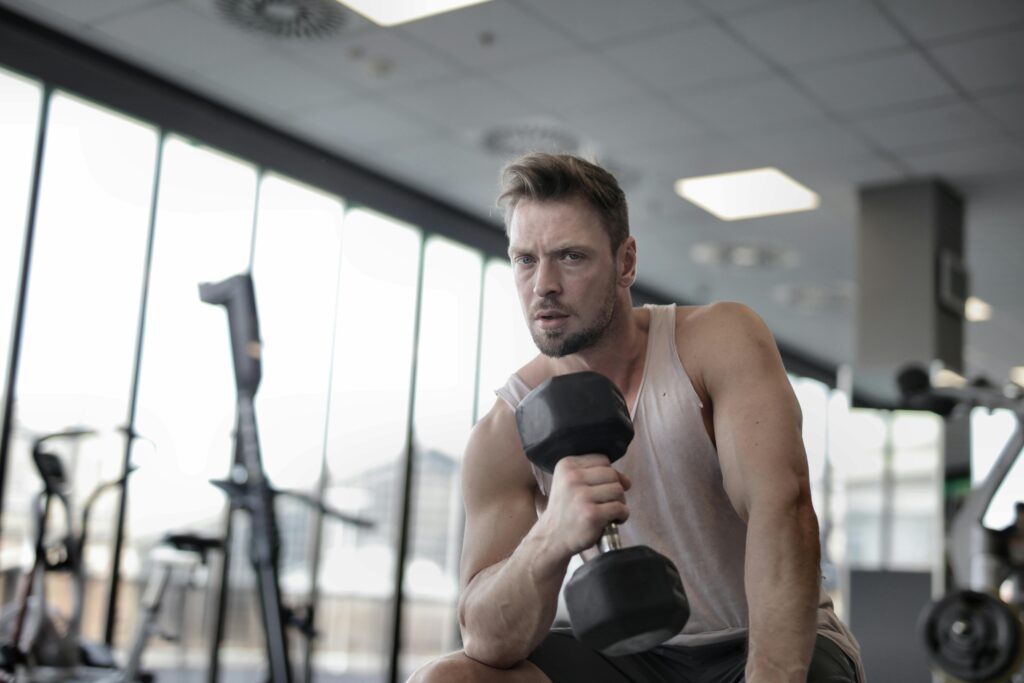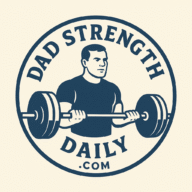If you’ve noticed your arms looking a bit smaller or your strength declining despite hitting the gym, you’re not imagining things. Losing muscle mass in your 50s is a real phenomenon—but it’s not inevitable.

The Science Behind Muscle Loss After 50
Starting around age 30, men begin losing 3-8% of their muscle mass per decade, with the rate accelerating after 60. This age-related muscle loss, called sarcopenia, affects nearly every man to some degree.
Here’s what’s happening in your body:
1. Testosterone Naturally Declines
Research published in the Journal of Clinical Endocrinology & Metabolism shows that testosterone levels drop approximately 1-2% per year after age 40. Since testosterone is crucial for building and maintaining muscle, this decline directly impacts your ability to hold onto hard-earned gains.
2. Your Muscle Protein Synthesis Slows Down
A study in The American Journal of Clinical Nutrition found that older adults have a blunted response to protein intake compared to younger individuals. Simply put, your muscles become more “resistant” to the muscle-building signals from protein and exercise.
3. You’re Probably Less Active
A 2019 study in BMJ Open Sport & Exercise Medicine revealed that physical activity levels drop significantly in middle age. Desk jobs, injuries, and life responsibilities mean less movement—and muscle follows a “use it or lose it” principle.
4. Inflammation Increases
Chronic low-grade inflammation, which increases with age, can accelerate muscle breakdown. Research in Aging Cell shows that inflammatory markers are closely linked to sarcopenia progression. A recent study and recommendation even finds that inflammation might be as or more important than cholesterol control in avoiding heart attacks.
The Good News: Muscle Loss Isn’t Inevitable
Multiple studies confirm that resistance training and adequate protein intake can not only slow muscle loss but actually reverse it—even in men over 50.
Here’s what you can do:
Lift Heavy Things 3-4x Per Week
A landmark study in Medicine & Science in Sports & Exercise showed that men in their 50s and 60s who followed a progressive resistance training program gained significant muscle mass—sometimes matching the gains of men in their 20s.
Eat 1g of Protein Per Pound of Body Weight
Research suggests older adults need more protein than younger people to stimulate the same muscle growth. This may sound like a lot but you don’t need to just eat chicken, broccoli and rice like a body builder. My wife and I are in love with making these delicious, convenient Filet Mignon steaks on weekends. Season them and throw them in a cast iron pan for 4 minutes per side. Even our picky eater 11 year son started eating them. If you are short at the end of the day get one of the 42g shakes!
Prioritize Sleep and Recovery
Growth hormone, which helps preserve muscle, is primarily released during deep sleep. Aim for 7-9 hours consistently. This might be the hardest step. I found sticking to a fixed schedule is helpful and magnesium seems to help me.
Stay Consistently Active
Beyond structured workouts, daily movement matters. A 2020 study in Frontiers in Physiology found that even walking significantly helps maintain muscle mass in older adults.
Bottom Line
Yes, you’re losing muscle mass in your 50s because of hormonal changes, reduced protein synthesis, and lifestyle factors. But the science is clear: with the right training stimulus and nutrition, you can not only stop the loss but build new muscle.
Your 50s aren’t the beginning of decline—they’re the decade where smart training matters most.
—
product links may earn commission
